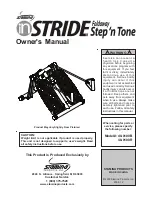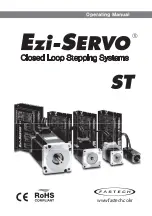
Lors de l’utilisation de cette machine, les précautions élémentaires de sécurité
doivent être pris es. Lisez attentivement toutes les consignes de sécurité suivantes
avant de l’utiliser :
* Ne laissez pas la machine sans surveillance lorsqu’elle est sous tension.
Débranchez la immédiatement après l’utilisation et avant le nettoyage.
* Débranchez la machine avant de changer l’ampoule. Remplacer l’ampoule par une
autre de 15 Watts et du même type. Assurez vous d’avoir remis le cache après
avoir changé l’ampoule.
* Assurez vous que le voltage du moteur corresponde à celui de l’installation
électrique.
* Cette machine est conçue pour un usage familial tel que décrit dans cette notice
d’utilisation. Utilisez uniquement les accessoires conseillés dans cette notice.
* Pour débrancher la machine positionnez l’interrupteur sur « O » lorsque vous
effectuez des opérations telles que enfilage des aiguilles ou des boucleurs ,
changement de plaque à aiguille ou de pied presseur etc....
* Débranchez la machine lorsque vous retirez les carters , lubrifiez le mécanisme ou
lors de toute opération d’entretien décrite dans cette brochure.
* N’essayez pas de régler vous-même la courroie du moteur. Si un réglage s’avère
nécessaire, contactez votre Service Après Vente .
* Manipulez le rhéostat avec précaution et évitez de le faire tomber. Assurez-vous
que rien n’est posé dessus.
* Utilisez la plaque à aiguille adéquate. Une plaque non conforme pe ut casser
l’aiguille.
* N’utilisez pas d’aiguille tordue.
* Lors de la couture, éloignez vos doigts de toute pièce en mouvement et
particulièrement de l’aiguille.
* Ne tirez et ne poussez pas le tissu lors de la couture, cela pourrait casser l’aiguille.
* Pour l’entretien des machines à double isolation, n’utilisez que des pièces de
rechange identique . Voir les instructions pour le service après-vente des appareils
à double - isolation.
* Ne jamais utiliser la machine si le cordon ou la prise électrique sont endommagés,
si elle est tombée ou abîmée, si elle a été exposée à l’eau. Contactez votre
Service Après Vente pour tout examen , réglage ou réparation.
* N’utilisez pas la machine si les aérations ou le rhéostat sont obstrués par la
poussière, la bourre de fil ou de tissu.
* N’insérez ou ne faîtes pas tomber d’objets dans les ouvertures de la machine.
Pour réduire le risque de blessures, éteindre l'interrupteur avant l'entretien. Fermer
le couvercle boucleur avant exploitation.
*
CONSIGNES DE SECURITE
4
DANGER - Pour reduire le risque de décharges électriques :
AVERTISSEMENT - Pour réduire le risque de brûlures, de feu, de
ou de blessures Aux personnes :
décharges électriques
Summary of Contents for MK 4055
Page 1: ...INSTRUCTION BOOK INSTRUCTION BOOK INSTRUCTION BOOK...
Page 33: ...J1P17...






































